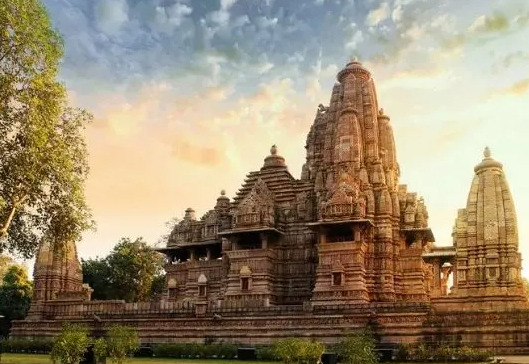
Travel to Indian temples : Marvel of Architecture- India, a land rich in cultural diversity and ancient traditions, boasts a treasure trove of architectural marvels, with its temples standing as timeless testaments to craftsmanship, spirituality, and intricate design. The journey through Indian temple architecture is not merely a physical one but a transcendental experience that unravels the intricate layers of history, culture, and faith. In this exploration, we embark on a virtual pilgrimage, delving into the architectural splendors of Indian temples, each narrating stories of devotion, artistry, and the enduring spirit of a civilization.
Historical Context:
The roots of Indian temple architecture can be traced back to ancient times, with its evolution spanning centuries and influenced by diverse dynasties and regions. The earliest temples, such as those from the Gupta period (4th to 6th centuries CE), were predominantly rock-cut caves adorned with simple yet elegant carvings. Over time, distinct styles emerged, each reflecting the socio-cultural ethos of its era.
- Nagara Style:
Characterized by towering spires or shikharas, the Nagara style is prevalent in North India. Temples like the Kandariya Mahadeva Temple in Khajuraho exemplify this style, featuring intricately carved shikharas and vibrant sculptures.
- Dravida Style:
Southern India embraced the Dravida style, marked by pyramidal towers or vimanas. The Brihadeshwara Temple in Thanjavur stands as a masterpiece, showcasing the grandeur of Dravidian architecture with its towering vimana and intricate sculptures.
- Vesara Style:
A harmonious blend of Nagara and Dravida styles, the Vesara style is prominent in central India. The temples of Ellora, such as the Kailasa Temple, epitomize Vesara architecture, featuring rock-cut structures with ornate carvings.
Architectural Elements:
Indian temple architecture is a symphony of intricate details, with each element serving a symbolic or spiritual purpose. From the majestic entrance to the sanctum sanctorum, the temples are designed to evoke a sense of divinity and wonder.
- Gopurams and Shikharas:
Gopurams, monumental entrance towers adorned with vibrant sculptures, are a hallmark of South Indian temples. In contrast, North Indian temples feature towering shikharas, intricately carved and reaching towards the heavens.
- Mandapas:
Pillared halls or mandapas serve as spaces for congregational activities and cultural performances. The Sabhamandap of the Sun Temple in Konark, with its large dance hall and impressive sculptures, exemplifies the significance of mandapas.
- Garbhagriha:
The inner sanctum or garbhagriha houses the principal deity. Elaborate carvings and sculptures surround the sacred space, creating an atmosphere of spiritual transcendence. The Badami Cave Temples in Karnataka beautifully exemplify this sacred inner sanctum.
- Sculptures and Bas-Reliefs:
The exteriors of Indian temples are adorned with an array of sculptures and bas-reliefs depicting deities, mythological narratives, and scenes from daily life. The Khajuraho Group of Monuments, famous for its carved sculptures, is a testament to the artistry of Indian craftsmen.
Spiritual Significance:
Indian temples are not merely architectural wonders; they are spiritual hubs that encapsulate the essence of devotion and religious practices. The design and layout of temples are often rooted in ancient texts such as the Agamas and Vastu Shastra, which prescribe guidelines for temple construction to create a harmonious and spiritually charged environment.
1- Alignment and Orientation:
Temples are often aligned to face cardinal directions, with the main entrance facing east. This alignment is symbolic, representing the journey of the sun and the cosmic order. The Konark Sun Temple is a prime example, designed to capture the first rays of the rising sun.
2- Symbolism in Design:
Every architectural element in a temple holds symbolic significance. From the lotus motifs representing purity to the serpent carvings symbolizing energy, each detail contributes to a sacred narrative. The Meenakshi Amman Temple in Madurai is a visual encyclopedia of symbolic representations.
3- Ritualistic Spaces:
Temples are to accommodate a series of rituals and ceremonies. The circumambulatory path or pradakshina patha around the sanctum allows to perform ritualistic circumambulation, a practice prevalent in many temples like the Kedarnath Temple in the Himalayas.
4- Sacred Geometry:
The architecture of temples often adheres to principles of sacred geometry, believed to enhance the spiritual energy of the space. Mandalas, yantras, and geometric patterns are incorporated into the design, creating a visually harmonious and spiritually charged atmosphere.
5- Murti Worship:
The central sanctum of a temple houses the murti or deity, whose worship is a focal point of devotion. Elaborate rituals, including puja and aarti, are performed to honor and connect with the divine. The Badrinath Temple in Uttarakhand exemplifies the significance of murti worship.
6- Vedic Rituals:
Many temples follow Vedic rituals, with priests conducting ceremonies based on ancient scriptures. Fire rituals, known as homa or yajna, are performed to invoke divine blessings. The Varanasi Ghats along the Ganges River are witness to elaborate Vedic rituals.
Spiritual Journeys:
Temples often serve as starting points for spiritual journeys and pilgrimages. The Amarnath Cave Temple in Jammu and Kashmir, dedicated to Lord Shiva, is part of the annual Amarnath Yatra pilgrimage, attracting devotees from far and wide.
Festivals and Celebrations:
The spiritual calendar of temples is punctuated by festivals and celebrations. During which devotees come together to express their faith and devotion. The Rath Yatra at the Puri Jagannath Temple and the Navaratri celebrations at the Chamundeshwari Temple in Mysuru are vibrant examples of these festivities.
Top Marvel of Architecture
1- Kailasa Temple, Ellora Caves, Maharashtra:
Carved from a single rock, the Kailasa Temple is a breathtaking example of Vesara architecture. Its colossal scale and detailed carvings make it one of the most remarkable rock-cut temples in the world.
2- Jagannath Temple, Puri, Odisha:
Famous for the Rath Yatra festival, the Jagannath Temple is a significant pilgrimage site. The temple’s architectural style reflects the Kalinga school of architecture, with its towering spires and intricate carvings.
3- Meenakshi Amman Temple, Madurai, Tamil Nadu:
The Meenakshi Amman Temple, dedicated to Goddess Meenakshi and Lord Sundareswarar, stands as a living testament to the Dravida style. Its vast complex adorns colorful sculptures and striking architecture.
4- Badami Cave Temples, Karnataka:
Carved out of sandstone cliffs, the Badami Cave Temples showcase a blend of Nagara and Dravida styles. The intricately carved sculptures and rock-cut architecture make them a significant historical site.
5- Sun Temple, Konark, Odisha:
Shaped like a colossal chariot with intricate stone wheels, the Sun Temple in Konark is a UNESCO World Heritage Site.
It symbolizes the sun god’s journey across the sky and earns renown for its architectural grandeur.
6- Virupaksha Temple, Hampi, Karnataka:
The Virupaksha Temple, dedicated to Lord Shiva, sits amidst the ruins of the Vijayanagara Empire. The temple’s architecture, including the towering gopuram, reflects the Vijayanagara style.
Pilgrimage and Cultural Heritage:
Indian temples serve as spiritual sanctuaries and cultural repositories. Pilgrims and visitors alike embark on journeys to these sacred sites. Seeking not only divine blessings but also immersing themselves in the rich tapestry of Indian heritage.
Pilgrimage Routes:
Many temples are strategically located along pilgrimage routes, inviting devotees to undertake journeys of faith. The Char Dham Yatra, encompassing Kedarnath, Badrinath, Yamunotri, and Gangotri, is a revered pilgrimage circuit in the Himalayas.
Festivals and Celebrations:
Temples are vibrant centers of festivals and celebrations, each rooted in religious traditions. The Rath Yatra at the Jagannath Temple, the Diwali celebrations at the Golden Temple in Amritsar, and the Kumbh Mela at various locations are testament to the cultural significance of these sites.
Cultural Festivities:
Temples often serve as platforms for cultural festivities, showcasing classical dance, music, and traditional art forms. The Natyanjali Dance Festival at the Chidambaram Nataraja Temple is a vibrant celebration of classical dance.
Preservation and Conservation Efforts:
Both governmental and non-governmental bodies undertake the shared responsibility of preserving the architectural legacy of Indian temples. Conservation efforts aim not only to protect these structures. But also to promote awareness about their historical and cultural significance.
UNESCO World Heritage Sites:
Several Indian temples, such as Khajuraho, Brihadeshwara Temple. And the Sun Temple in Konark, have earned UNESCO World Heritage status. This recognition highlights the global importance of these architectural wonders.
Heritage Trusts:
Organizations like the Archaeological Survey of India (ASI) and various state heritage trusts play a crucial role in the restoration and maintenance of temples. Their efforts include structural repairs, documentation, and educational initiatives.
Community Participation:
In many cases, local communities actively participate in the preservation of temples. This involvement fosters a sense of ownership and pride, ensuring that these cultural landmarks continue to thrive for future generations.
Conclusion:
Journeying through the marvels of Indian temple architecture is a profound experience that transcends the realms of history, spirituality, and art. These temples, with their diverse architectural styles and cultural significance, stand as timeless witnesses to the enduring spirit of a civilization deeply rooted in its traditions.
As we explore the intricacies of each temple, we not only witness architectural brilliance. But also understand the profound cultural and spiritual importance these structures hold. From the towering spires of North India to the intricate carvings of the South, every temple narrates a unique tale of devotion, craftsmanship, and the timeless pursuit of the divine.
